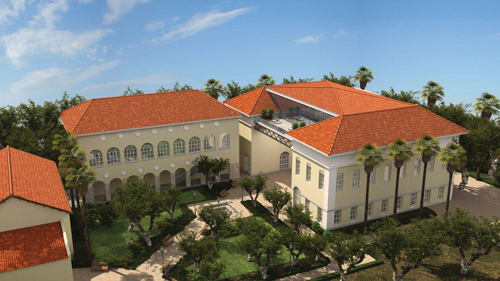Dance: Dance in Spite of Conflict
By Dawn Lille
arttimesjournal August 13, 2018
Headlines these days tell of deaths at the border between Israel and Gaza. But the other side of events in Israel – this often- contradictory land – is the growing number of dancers, choreographers, musicians and composers it constantly shares with the world.
 Girls in Crinolines (photo: Keren Rosenberg) Jeruselem Academy of Music and Dance |
The Jerusalem Academy of Music and Dance is 85 years old and it celebrated this anniversary during the International Board of Governors meeting in June. The Academy is comprised of a conservatory, a regional high school and the university level academy, which awards BA and MA degrees in music and dance. The over 1800 students come from Christian, Muslim and Jewish backgrounds. The Board was treated to concerts of North African and Andalusian music, outstanding chorale and song presentations and quartet and solo musical concerts. In the corridors one could hear Arabic, klezmer and jazz music.
The dance students may concentrate on technique and performance or creative movement that employs Eshkol/Wachman notation to create dance. Last March they presented Body/Dance/Place, directed by faculty member Neta Pulvermacher, as part of the Jerusalem Dance Festival. She asked six Jerusalem based choreographers each to create a short dance based on Jerusalem and its different facets and communities. They were presented as one roaming work (e.g. the audience went from room to room) performed by sixteen Academy students at an alternative arts space in the city.
Parts of this work were seen at an open rehearsal of sections of the piece. Table, choreographed by Neta Pulvemachher for eight dancers, was inspired by the Kurt Jooss ballet The Green Table and is a commentary on the various political debates in the city. Hello Dolly, Maya Yogel’s work for five crinoline clad dancers, reflects the sounds and complexities of Jerusalem. These students moved with a concentration that never wavered and the choreography gave them an opportunity to share different viewpoints, while showcasing new choreographers.
One would think that a country that probably produces more choreographers per population count than any other would not need a center for choreography. But after Anat Danieli, who spent many years performing and creating in NYC, returned to Israel in 1990 and formed a company, she decided to take a hiatus. She wished to examine what she was doing and began to search for new practices in “the producing process.”
 Kelim (photo by Yair Meuhas) |
This evolved into a choreographic workshop that became Kelim, roughly translated as “a container or tools for energy.” Formally established in 2009, it is a two year post -graduate program meeting from 9:30 AM until 3:30 PM four days a week. Their approach comes from the belief that creative thought can result in everyday actions and that imbedded in the body are personal, human and political elements that deserve a discourse.
These choreographers, who range in age from 24 to 35, work in a converted warehouse donated by the municipality of Bat Yam, a suburb of Tel Aviv. They offer five to eight professional productions a year plus a festival. They host a residency program in which selected choreographers receive space, advice and an opportunity to show their work. Kelim also reaches out to different parts of the community – the elderly, youth, the disabled – in their search for different means of expression via dance.
One of the leading presenters of dance in Israel is the Suzanne Dellal Centre for Dance and Theatre, established in 1989 in the old Neve Zedek neighborhood of Tel Aviv. They have a large, gracious theater, a small theater and studios. The Batsheva Dance Company makes its home in the compound, which is surrounded by art galleries, boutiques and restaurants.
 New Building at Suzanne Della in Tel Aviv |
The newest and most exciting development, overseen by Yair Vardi, director of the Centre, is the expansion and addition to one of the old landmark buildings. The result will be a total of seven studios, three of which are for Batsheva, and two new theaters, one of them outdoors. The new edifice retains its historical shell but incorporates every modern element relevant to its use.
This is a venue that produces not only Israeli choreographers and companies (the Jerusalem Academy dancers will perform Body/Dance/Space here) but has an international series as well, showcasing groups from Europe, Asia, South America and the United States.
All of these activities make Israeli dance one of great relevance. They keep hoping for some sort of peace through the arts!
dawnlille@aol.com
